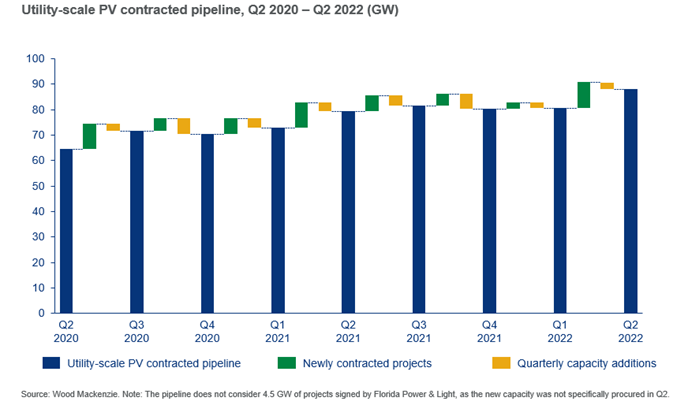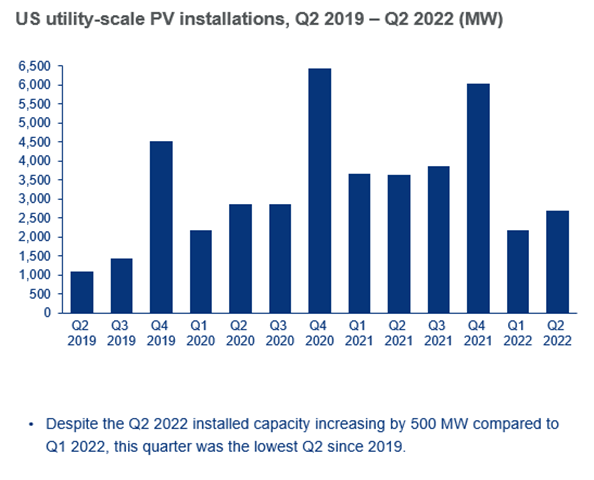Get in touch
-
Mark Thomtonmark.thomton@woodmac.com
+1 630 881 6885 -
Hla Myat Monhla.myatmon@woodmac.com
+65 8533 8860 -
Chris Bobachris.boba@woodmac.com
+44 7408 841129 -
Angélica Juárezangelica.juarez@woodmac.com
+5256 4171 1980 -
BIG PartnershipWoodMac@BigPartnership.co.uk
UK-based PR agency
New US solar contract capacity sees record growth in Q2
Quarterly utility-scale PV installations increase, Texas leads with more than half of US activity
1 minute read
Boosted by recent legislation, the U.S. recorded 10 gigawatts (GW) of new utility-scale solar capacity contracts in Q2, up 201% from Q1 for the largest quarter-over-quarter growth on record according to new analysis from Wood Mackenzie, a Verisk business (Nasdaq: VRSK).
This activity accounted for the largest quarterly contracted capacity since 2019 and brought the contracted pipeline to 88 GW, an all-time high.
“We are seeing a lot of optimism right now in renewables with the passage of the Inflation Reduction Act,” said Sylvia Leyva Martinez, senior research analyst with Wood Mackenzie. “The utility-scale solar segment is seeing a real boost of interest and investment. There are still some short-term challenges for installations, as we continue to grapple with supply chain challenges, but the future looks very bright.”
While contracts remain high, the effects of the IRA bill will likely not fully kick in until 2025, when project timetables catch up and supply chain issues have ceased. Wood Mackenzie is projecting that the U.S. utility-scale PV market will add 437 GW between 2022 and 2032.

The U.S. registered 2.7 GW of utility-scale solar installations in Q2, up 24% from the previous quarter. More than half of the activity (53%) was driven by Texas. The Southeast was also active, with Florida and Georgia recording strong gains as well at 12% and 11%, respectively.
Despite the increase, the aforementioned supply chain constraints continue to hamper the industry. This quarter was the lowest Q2 for installations since 2019 and the fifth lowest quarter in that timeframe.
“We are seeing diversification in the pipeline, with New York and Florida both with more than 5 GW of projects in development,” said Matthew Sahd, research associate at Wood Mackenzie.
Sahd concluded: “Utilities continue to be the strongest driver, but their share of the pipeline continues to decrease. The increase of corporate-driven procurement has made up for this - which should continue to drive more activity in the future.”






